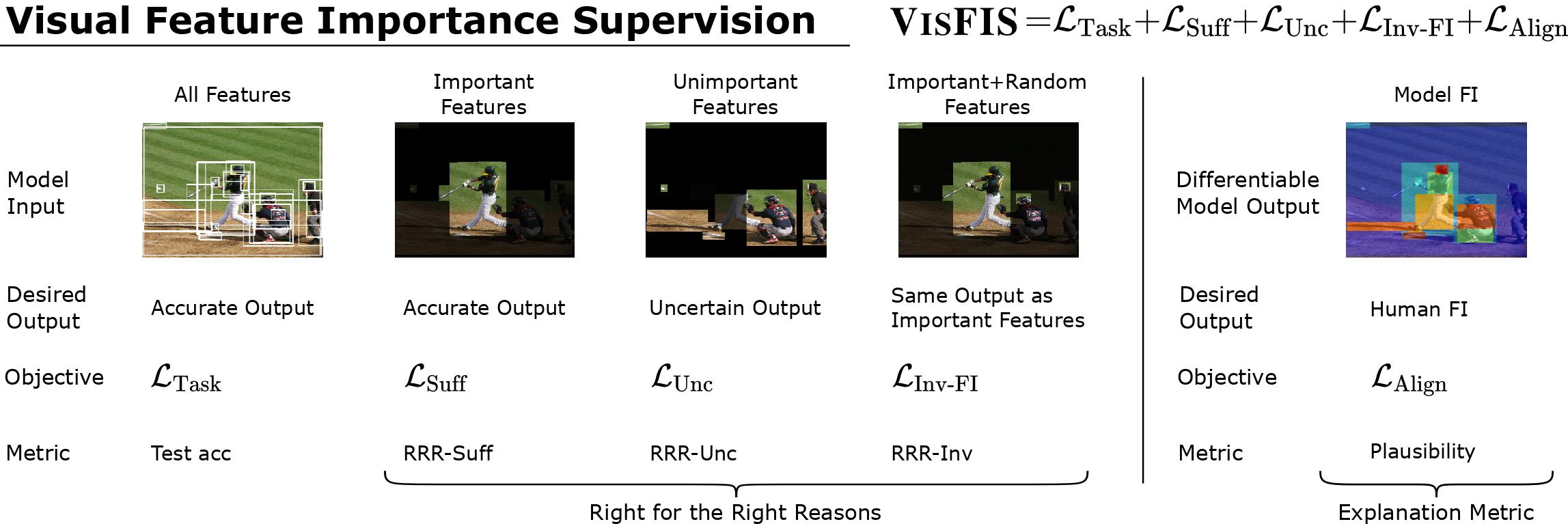VisFIS: Visual Feature Importance Supervision with Right-for-the-Right-Reason Objectives
Many past works aim to improve visual reasoning in models by supervising feature importance (estimated by model explanation techniques) with human annotations such as highlights of important image regions. However, recent work has shown that performance gains from feature importance (FI) supervision for Visual Question Answering (VQA) tasks persist even with random supervision, suggesting that these methods do not meaningfully align model FI with human FI. In this paper, we show that model FI supervision can meaningfully improve VQA model accuracy as well as performance on several Right-for-the-Right-Reason (RRR) metrics by optimizing for four key model objectives: (1) accurate predictions given limited but sufficient information (Sufficiency); (2) max-entropy predictions given no important information (Uncertainty); (3) invariance of predictions to changes in unimportant features (Invariance); and (4) alignment between model FI explanations and human FI explanations (Plausibility). Our best performing method, Visual Feature Importance Supervision (VisFIS), outperforms strong baselines on benchmark VQA datasets in terms of both in-distribution and out-of-distribution accuracy. While past work suggests that the mechanism for improved accuracy is through improved explanation plausibility, we show that this relationship depends crucially on explanation faithfulness (whether explanations truly represent the model's internal reasoning). Predictions are more accurate when explanations are plausible and faithful, and not when they are plausible but not faithful. Lastly, we show that, surprisingly, RRR metrics are not predictive of out-of-distribution model accuracy when controlling for a model's in-distribution accuracy, which calls into question the value of these metrics for evaluating model reasoning. All supporting code is available at https://github.com/zfying/visfis
PDF Abstract




 Visual Question Answering
Visual Question Answering
 CLEVR
CLEVR
 GQA
GQA
 VQA-HAT
VQA-HAT